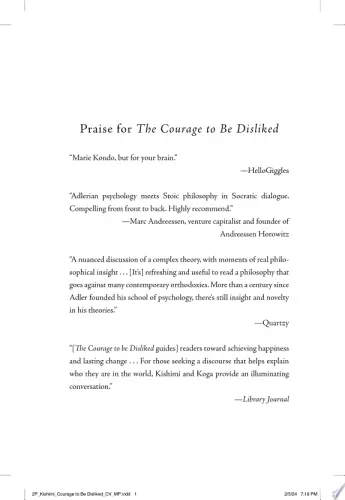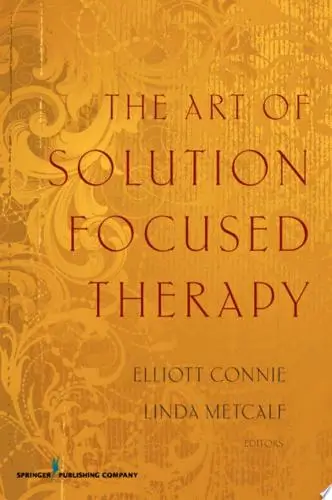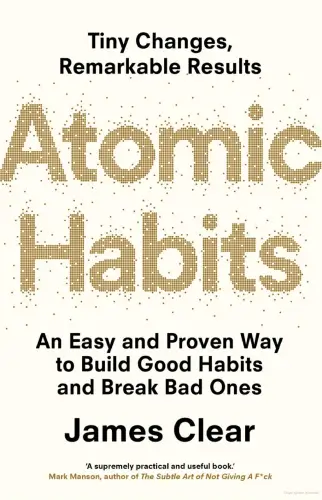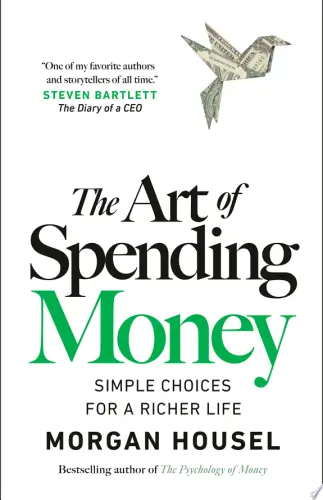
Feeling Good
The New Mood Therapy
What's it about?
Feeling Good by David D. Burns is a groundbreaking book that offers practical techniques to help you overcome negative thinking and improve your mental health. Through cognitive behavioral therapy, Burns teaches readers how to challenge and change their distorted thoughts, leading to a more positive outlook on life. With easy-to-follow exercises and relatable examples, this book empowers individuals to take control of their emotions and live a happier, more fulfilling life.
About the Author
David D. Burns is a prominent psychiatrist and author, best known for his book "Feeling Good: The New Mood Therapy." His work primarily focuses on cognitive behavioral therapy (CBT) and its applications in treating depression and anxiety. Burns has significantly contributed to popularizing CBT through accessible and practical self-help literature.
10 Key Ideas of Feeling Good
Identify Distorted Thoughts
Begin by recognizing the negative thoughts that contribute to your feelings of unhappiness or depression.
These thoughts often fall into categories like 'all-or-nothing thinking,' 'overgeneralization,' and 'mind reading.'
Understanding these patterns allows you to challenge and question their validity, helping to reduce their impact on your mood.
Learn DeeperKeep a Thought Diary: Every day, jot down any negative thoughts that cross your mind. Next to each thought, categorize it (e.g., 'all-or-nothing thinking', 'overgeneralization', 'mind reading'). This practice helps you become more aware of the frequency and types of distorted thoughts you have.
Challenge Your Thoughts: Once you've identified a distorted thought, ask yourself evidence-based questions like 'What evidence do I have that this thought is true? What evidence do I have that this thought isn't true?' This process encourages critical thinking and often reveals that many negative thoughts are not fully supported by facts.
Practice Reframing: After challenging a distorted thought, try to reframe it in a more balanced and realistic way. For example, if you think 'I'll never be good at this,' reframe it to 'I'm having trouble with this now, but with practice and patience, I can improve.'
Set Small, Achievable Goals: Break down overwhelming tasks into smaller, manageable steps. This can help reduce feelings of inadequacy or failure and reinforce the idea that progress, no matter how small, is still progress.
- Example
If you catch yourself thinking, 'I messed up this presentation; I'm terrible at my job,' categorize this as 'all-or-nothing thinking.' Challenge it by listing times you've succeeded at work. Reframe it to 'The presentation didn't go as well as I hoped, but I've done well before and can learn from this experience.'
- Example
When you think, 'My friend hasn't replied to my text; they must be mad at me,' identify this as 'mind reading.' Challenge it by considering other reasons for the delay. Reframe it to 'There could be many reasons why my friend hasn't replied yet. It doesn't necessarily mean they're upset with me.'
Practice Cognitive Restructuring
Once you've identified distorted thoughts, work on reframing them in a more realistic and positive way.
This involves examining the evidence for and against your negative thoughts, considering alternative interpretations, and using balanced thinking to counter pessimism.
This technique helps in reducing negative emotions and promotes a healthier outlook.
Learn DeeperIdentify Your Negative Thoughts: Start by keeping a journal. Whenever you feel upset or stressed, write down the thoughts that were going through your mind at that moment. This helps in recognizing patterns and the common distortions in your thinking.
Challenge Your Thoughts: For each negative thought, ask yourself: 'What's the evidence that this thought is true? What's the evidence against it?' This helps in evaluating your thoughts more objectively.
Consider Alternative Interpretations: Ask yourself if there are other ways to view the situation. Could someone else see it differently? This encourages flexibility in your thinking.
Practice Balanced Thinking: Instead of thinking in extremes, try to find a more balanced perspective. For example, instead of thinking 'I'm a failure,' consider 'I didn't do as well as I hoped this time, but I can learn from this experience.'
Use Positive Affirmations: Counter negative thoughts with positive statements about yourself, even if you don't fully believe them at first. Over time, these affirmations can help shift your mindset towards a more positive outlook.
- Example
If you're thinking 'I'll never be good at my job,' challenge this by listing instances where you've received positive feedback or successfully completed tasks. A more balanced thought could be 'I have areas to improve, but I also have strengths that I bring to my team.'
- Example
When faced with the thought 'No one cares about me,' consider alternative interpretations. Perhaps friends haven't reached out because they're busy or assume you're busy. Reach out to them and express your feelings, which might lead to a more balanced view of your relationships.
Engage in Behavioral Activation
Increase activities that bring you joy and satisfaction.
Start small with manageable tasks and gradually add more complex or challenging activities.
Behavioral activation helps combat the inertia that often accompanies depression, boosting mood through accomplishment and engagement in meaningful activities.
Learn DeeperIdentify Activities You Enjoy: Start by making a list of activities that you find enjoyable or satisfying, no matter how small. This could include reading, walking, cooking, or even organizing your space.
Set Small, Achievable Goals: Break down these activities into small, manageable tasks. For example, if you enjoy reading but can't find the motivation, commit to reading just one page a day.
Schedule Your Activities: Plan when you'll do these activities. Having them scheduled can make it more likely that you'll follow through. Start with one or two activities per day, and gradually increase as you feel more comfortable.
Track Your Progress: Keep a journal or use an app to track the activities you complete. Reflect on how each activity made you feel and the progress you're making towards engaging more in life.
Reward Yourself: After completing an activity, especially one that was challenging for you, reward yourself. This could be as simple as acknowledging your effort or treating yourself to something small.
- Example
If you enjoy painting but have been avoiding it, start by setting up your painting area one day. The next day, just mix some colors. Gradually work up to painting for just 10 minutes a day, slowly increasing the time as you feel more engaged.
- Example
For someone who likes gardening but hasn't been active, begin by spending five minutes a day outside in your garden, perhaps watering plants or pulling weeds. Slowly increase the time spent and the complexity of gardening tasks as your interest and energy return.
Use the Double-Column Technique
Learn DeeperNegative Thoughts Rational Responses I'm not good enough for this job. I have the skills and experience required. I'll never be able to change. Change takes time, and I can take small steps. Everyone is judging me. Most people are focused on their own lives. I always mess things up. I learn from my mistakes and improve each time. I'm a failure because I didn't succeed. Failure is a part of growth; I can try again. I can't handle this stress. I have coping strategies that help me manage stress. No one cares about me. I have friends and family who support me. I'm too old to start something new. It's never too late to pursue new interests. I will never be happy again. Happiness can come in small moments; I can find joy in daily life. I always make the wrong decisions. I can learn from my choices and make better ones in the future. Identify Your Negative Thoughts: Start by being mindful of your thoughts throughout the day. When you catch yourself thinking negatively, jot it down. This could be anything from 'I'm not good enough' to 'I'll never get this right.'
Create Your Double-Column Chart: Grab a piece of paper or open a digital document and draw a line down the middle. Label one column 'Negative Thought' and the other 'Rational Response.'
Challenge Each Negative Thought: For every negative thought you've listed, think critically about it and write a rational, more positive response in the corresponding column. Ask yourself if the negative thought is truly accurate, or if there's another way to view the situation.
Reflect on the Differences: After you've filled out both columns, take some time to reflect on the differences between your negative thoughts and the rational responses. Notice how the negative thoughts might be exaggerated or unfounded.
Practice Regularly: Make this exercise a regular part of your routine. The more you practice, the quicker you'll be able to identify and counteract negative thoughts in real-time.
- Example
Negative Thought: 'I'm going to fail this exam, I'm not smart enough.' Rational Response: 'I've passed exams before when I've studied hard. One exam doesn't determine my intelligence.'
- Example
Negative Thought: 'Nobody likes me because I'm too awkward.' Rational Response: 'I have friends who enjoy my company. Being awkward sometimes doesn't mean I'm unlikable.'
Implement the Pleasure Predicting Sheet
Predicted Enjoyable Activities
Reading a New Book
Expected Pleasure: 8/10Going for a Nature Walk
Expected Pleasure: 9/10Cooking a New Recipe
Expected Pleasure: 7/10Practicing Yoga
Expected Pleasure: 8/10Watching a Movie
Expected Pleasure: 6/10Trying a New Hobby (e.g., painting)
Expected Pleasure: 7/10Spending Time with Friends
Expected Pleasure: 9/10Meditating
Expected Pleasure: 8/10
Engaged Activities and Actual Outcomes
Reading a New Book
Actual Outcome: 9/10
Reflection: The story was captivating and I lost track of time.Going for a Nature Walk
Actual Outcome: 10/10
Reflection: The fresh air and scenery were rejuvenating.Cooking a New Recipe
Actual Outcome: 6/10
Reflection: It was fun, but the dish didn’t turn out as expected.Practicing Yoga
Actual Outcome: 8/10
Reflection: I felt relaxed and centered after the session.Watching a Movie
Actual Outcome: 7/10
Reflection: The film was entertaining, but not as engaging as I hoped.Trying a New Hobby (e.g., painting)
Actual Outcome: 8/10
Reflection: I enjoyed the creative process and felt accomplished.Spending Time with Friends
Actual Outcome: 10/10
Reflection: Laughter and connection made it a memorable time.Meditating
Actual Outcome: 9/10
Reflection: I felt a deep sense of peace and clarity afterward.
Conclusion
This exercise highlighted that some activities provided more joy than anticipated, while others were less fulfilling.
Learn Deeper
Incorporating more nature walks and time with friends into my routine seems beneficial for overall happiness.
I’ll also continue exploring new hobbies, as they can lead to unexpected satisfaction.Create Your Pleasure Predicting Sheet: Grab a notebook or create a digital document. Divide it into three columns: Activity, Predicted Pleasure (rate from 0-10), and Actual Pleasure (rate from 0-10 after completing the activity).
Brainstorm Activities: Think of activities you've wanted to try or things you used to enjoy but haven't done recently. These can range from reading a book, going for a walk, trying a new recipe, to more significant endeavors like starting a hobby.
Schedule Time for These Activities: Look at your week ahead and schedule time for at least two of the activities you've listed. Treat these times as non-negotiable appointments with yourself.
Reflect and Adjust: After completing each activity, fill in the 'Actual Pleasure' rating. Reflect on any differences between your predictions and reality. Were some activities more enjoyable than you anticipated? Use this insight to adjust future plans and explore new activities that might bring unexpected joy.
- Example
Example 1: You predict that spending an hour sketching will rate a 6 on the pleasure scale. After doing it, you find the actual pleasure was an 8. This discovery encourages you to make more time for sketching in your schedule.
- Example
Example 2: You anticipate that attending a local community event will be a 7 in terms of enjoyment. However, after attending, you rate the actual pleasure as a 4. This outcome might lead you to reconsider the types of social events you think you enjoy and explore different options.
Deeper knowledge. Personal growth. Unlocked.
Unlock this book's key ideas and 15M+ more. Learn with quick, impactful summaries.
Read Full SummarySign up and read for free!
Feeling Good Summary: Common Questions
Experience Personalized Book Summaries, Today!
Discover a new way to gain knowledge, and save time.
Sign up for our 7-day trial now.
No Credit Card Needed

Similar Books

The Piano Teacher
Elfriede Jelinek
The Courage To Be Disliked
Ichiro Kishimi
We Were Liars
E. Lockhart
The Art of Solution Focused Therapy
Elliott Connie, MA, LPC
The Science of Storytelling
Will Storr
No Longer Human
太宰治
Wanting
Luke Burgis
Mrs Dalloway
Virginia Woolf
The Rational Optimist
Matt Ridley
The Social Animal
David BrooksTrending Summaries

Peak
Anders Ericsson
Never Split the Difference
Chris Voss
Smart Brevity
Jim VandeHei
The Psychology of Money
Morgan Housel
The First 90 Days
Michael D. Watkins
Atomic Habits
James Clear
Thinking, Fast and Slow
Daniel Kahneman
The Body Keeps the Score
Bessel van der Kolk M.D.
The Power of Regret
Daniel H. Pink
The Compound Effect
Darren HardyNew Books

The Art of Spending Money
Morgan Housel
$100M Offers
Alex Hormozi
A Candle for Kiri
Edna Mae Holm
Principles of Marketing, Global Edition
Gary Armstrong
Serpent Rising: The Kundalini Compendium
Neven Paar
Feeling Is the Secret
Neville Goddard
The 100 Best Business Books of All Time
Jack Covert
My Oxford Year
Julia Whelan
Trading in the Zone
Mark Douglas
